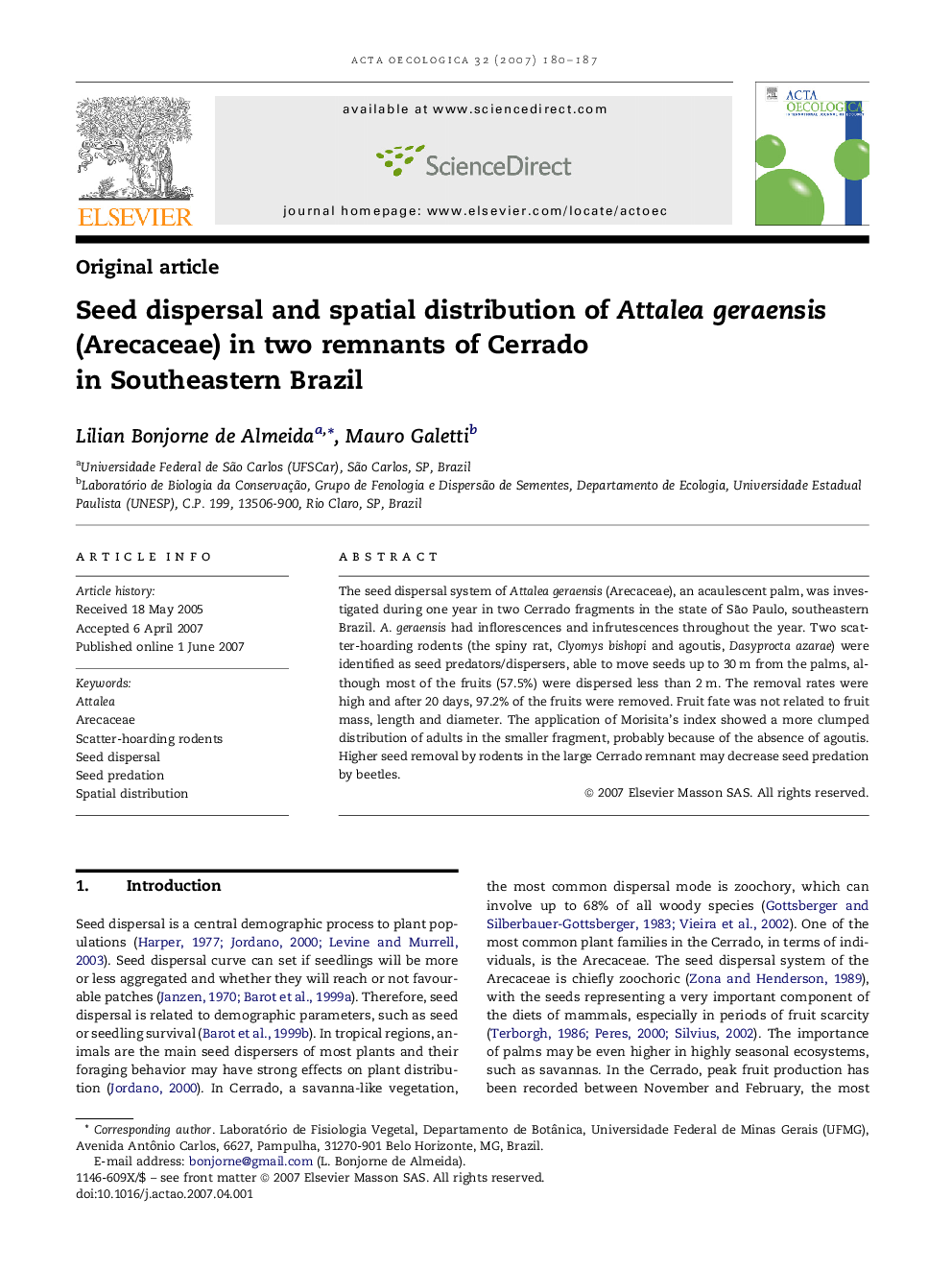| Article ID | Journal | Published Year | Pages | File Type |
|---|---|---|---|---|
| 4381537 | Acta Oecologica | 2007 | 8 Pages |
The seed dispersal system of Attalea geraensis (Arecaceae), an acaulescent palm, was investigated during one year in two Cerrado fragments in the state of São Paulo, southeastern Brazil. A. geraensis had inflorescences and infrutescences throughout the year. Two scatter-hoarding rodents (the spiny rat, Clyomys bishopi and agoutis, Dasyprocta azarae) were identified as seed predators/dispersers, able to move seeds up to 30 m from the palms, although most of the fruits (57.5%) were dispersed less than 2 m. The removal rates were high and after 20 days, 97.2% of the fruits were removed. Fruit fate was not related to fruit mass, length and diameter. The application of Morisita's index showed a more clumped distribution of adults in the smaller fragment, probably because of the absence of agoutis. Higher seed removal by rodents in the large Cerrado remnant may decrease seed predation by beetles.
